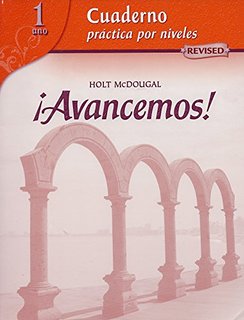
All Solutions
Page 87: Leer A
Reading with comprehension.
In this exercise, there is a survey. Read it carefully and understand what each student says. Then, head onto the questions section and respond accordingly. There is a small variety of adecuate ways to respond, so only use the below examples as a reference of how your sentences should look like.
1. No, Sarita siempre saca un buena nota en inglés.
2. Sí, Sandra está ocupada porque tiene que estudiar ciencias.
3. No, David está emocionado porque va a la clase de música.
The purpose of this exercise is to practise writing in Spanish.
In this exercise, you are asked how you feel when you go to three different classes. Read the questions and respond accordingly. Given the personal nature of these questions, only use the below examples as a reference of how your sentences should look like.
1. Cuando voy a la clase de ciencias, estoy nervioso.
2. Estoy emocionado cuando voy a la clase de español.
3. Cuando voy a la biblioteca, estoy contento.
You should write complete sentences.
Remember that adjectives that end with *”-o”* refer to boys, and adjectives that end with *”-a”* refer to girls. Look at the examples:
– El niño está contento.
*(The boy is happy.)*
– La niña está contenta.
*(The girl is happy.)*
– Cuando voy a la clase de ciencias estoy un poco nervioso/a.
*(When I go to science class, I am a bit nervous.)*
– Cuando voy a la clase de español estoy emocionado/a.
*(When I go to the Spanish class, I am excited.)*
– Cuando voy a la biblioteca estoy tranqilo/a.
*(When I go to to the library, I am calm.)*

